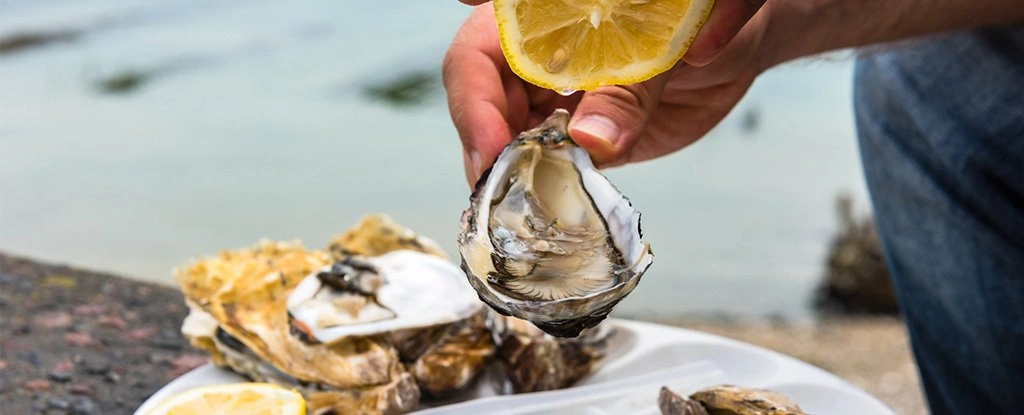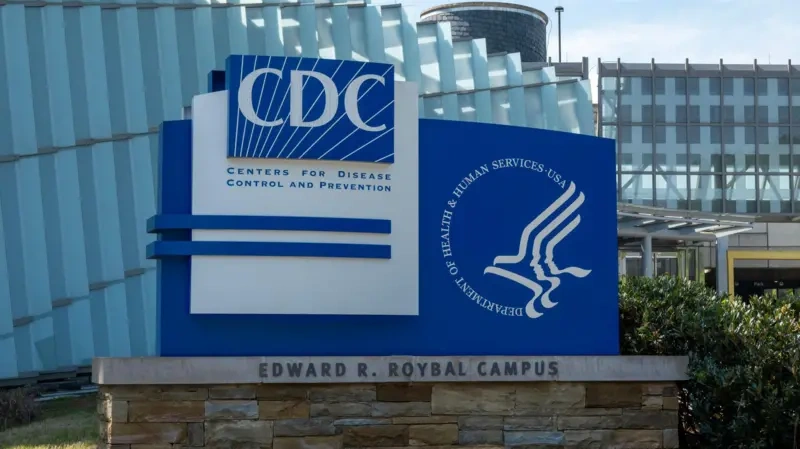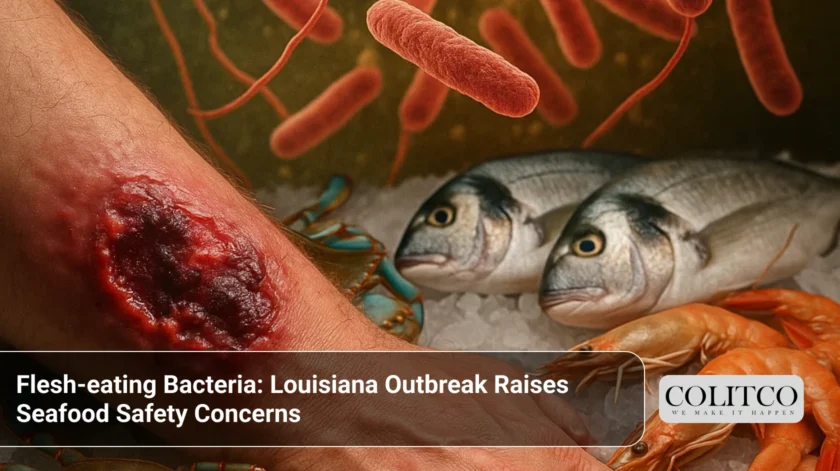Louisiana is facing an alarming health crisis linked to its seafood industry. To be precise, this year alone, six people have lost their lives and 34 more have been infected with Vibrio vulnificus, a bacterium feared for its flesh-eating properties.
This is the most alarming issue in the health sector. For the past decade, Vibrio cases have been linked to the consumption of raw oysters and the exposure of open wounds to coastal waters. This sudden increase has made seafood and shore visiting dangerous.

Six Dead, 34 Infected in Louisiana Flesh-Eating Bacteria Outbreak
How severe is the current outbreak?
According to the Louisiana Department of Health, the number of deaths this year is six, and the number of infected people per state is 34. These numbers are much higher than the average yearly numbers. Vibrio vulnificus normally claims one death and seven infections annually, which makes the cluster in 2025 shockingly extreme.
In fact, health officials call this the worst situation they have managed in ten years. There are reports that at least 22 of the infected were hospitalised. While some were Louisiana locals, others were tourists who had indulged in oyster eating. This further emphasises the widespread nature of this problem.
Why are cases rising so sharply?
Warming of the oceans is a cause for concern as it encourages bacterial growth along coastal areas. Vibrio grows in warm, brackish water and rapidly increases its population in the summer. With climate change, the warm seasons are prolonged. This is worrying as experts believe this is the cause of the excessive cases.
Along with the Gulf of Mexico, the bacteria are provided with an ideal ecosystem. The US Centres for Disease Control and Prevention (CDC) has also raised concerns about Vibrio as an emerging public health issue. It has been reported that cases have been on the rise in the last decade.

CDC Flags Vibrio as Growing Public Health Threat
What health risks does Vibrio pose?
Vibrio vulnificus is capable of causing necrotising fasciitis, commonly known as flesh-eating disease. This is the damage to skin, muscle, and the tissue beneath, caused by the bacteria. The symptoms are incredibly quick to develop. The patient may go through fever, chills, nausea, vomiting, and intense swelling of the skin. Blisters can form over wounds.
The infection can deeply spread within the body. There can be sepsis and, eventually, multiple organ failure. The CDC has estimated the death rate of people infected with the illness to be around twenty per cent.
The survivors are placed under critical care and, in extreme situations, may have to undergo amputations. Antibiotics and early diagnosis of the infection can seriously improve the outcome of the infection.
Louisiana issues seafood and water safety warnings
On July 31, an announcement was issued by Louisiana health officials. The announcement advised people to take certain precautions regarding seafood and water. Officials pointed out that shells with Vibrio bacteria contamination could not be detected by smell, tap, or appearance.
During the summer months, the Department of Health advised the public to refrain from consuming raw or undercooked oysters. People who had cuts or open wounds were discouraged from entering coastal waters.
Tourists and restaurateurs serving seafood were also required to enhance safety measures. Maintaining the shellfish at the appropriate temperature and sufficient cooking of shellfish were and still are required precautionary measures.
What steps can people take to protect themselves?
Authorities urge the public to ensure that all oysters and shellfish are cooked before eating. Boiling shellfish for an adequate time or steaming them is enough to eliminate Vibrio bacteria. No other activity poses as much risk as eating raw oysters during the summer season.
People with long-term illnesses such as liver disease, diabetes, or an impaired immune system are at the greatest risk. Such individuals need to exercise greater caution concerning seafood. Saltwater or brackish water exposure is not recommended for those with open wounds.
In the event of accidental exposure, such wounds ought to be immediately cleansed with clean water and an antiseptic. The use of gloves is recommended when dealing with raw seafood.
Can Louisiana contain the outbreak?
Officials from public health are keeping an eye on the waters near the coast and the seafood stores. Vibrios are bacteria that are normally present in these waters and stores, but depending on training and regulations, education can be very effective at diminishing the risk to the public.
Public health specialists note that the incidence of infections by Vibrios is low compared to the total number of seafood meals consumed. Still, the surge in cases in Louisiana shows the need for improved monitoring.
With the ongoing warming of the coastal waters due to climate change, we can expect outbreaks to become the norm. This, of course, is a problem for Louisiana and the rest of the Gulf states. Perhaps even the international seafood markets may be affected if the seafood markets suffer from low confidence.
Also Read: Chemist Warehouse to Merge with Sigma Healthcare: A Major Shift in Australia’s Pharmacy Sector
FAQs
- What is the reason behind the outbreak in Louisiana of the flesh-eating bacteria?
The outbreak is due to *Vibrio vulnificus*, which is found in warm coastal waters and raw oysters.
- How many people have been infected up to now?
34 Infected people and deaths of six people have been reported in Louisiana in 2025.
- What are the ways to lower the risk of infection?
Do not eat raw oysters, and keep wounds covered and away from coastal waters. Also, do not eat undercooked seafood.
- Is it safe to eat seafood from Louisiana now?
Outbreak protocols ban the consumption of raw oysters until further notice. Cooked seafood is safe to eat.












